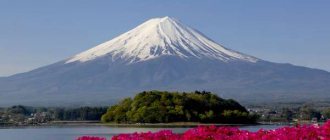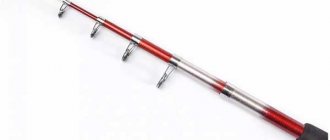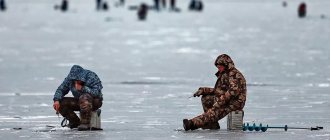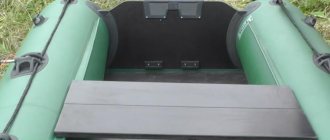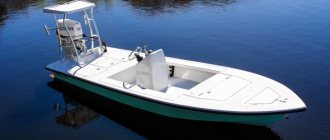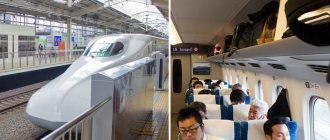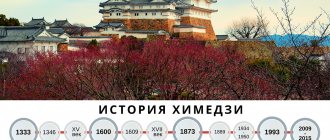General information about the economic and geographical location
This country is an island state located in East Asia. It is located in the Pacific Ocean and also occupies the territory of the seas - the Okhotsk, East China, Japanese, and Philippine seas. It is one of the top ten countries in terms of population, which is almost 130 million people . The capital is the city of Tokyo . The closest neighboring countries are Russia and South Korea. A little further away are North Korea and China.
Actively takes part in international life and occupies a leading position in the world economy. It belongs to the group of the most industrial countries in the world, is a member of the United Nations, the World Trade Organization, and the South Asian Association for Regional Cooperation.
The main part of the territory is occupied by mountains, among which there are more than a hundred active volcanoes . The soils are mostly superficial podzolic and peaty; there are also brown soils and red-yellow soils. There are many forests, including coniferous, subtropical, and mixed.
Respiratory tract[edit]
Kansai International Airport, Osaka
In 2013, Japan had the fourth largest air passenger market in the world with 105,913,000 passengers. [18] In 2013, there were 98 airports in Japan. [19] The main international gateways are Narita International Airport (Tokyo area), Kansai International Airport (Osaka/Kobe/Kyoto area), and Chubu Centrair International Airport (Nagoya area). The main domestic hub is Tokyo International Airport (Haneda Airport), Asia's busiest airport and the 4th busiest airport in the world; other major hubs include Osaka International Airport, New Chitose Airport outside Sapporo, and Fukuoka Airport. 14heliports are assumed to exist (1999).
Japan Passenger Airlines
The two main airlines are Japan Airlines and All Nippon Airways. Other passenger carriers include Skymark Airlines, Skynet Asia Airways, Air Do, Star Flyer and Fuji Dream Airlines. United Airlines and Delta Air Lines, formerly Northwest Airlines, are major international operators of Narita Airport.
Domestic air travel in Japan has historically been highly regulated. Since 1972, the three main domestic airlines (JAL, ANA and JAS) have been assigned specific routes, with JAL and ANA operating common mainline routes and ANA and JAS operating local feeder routes. JAL and JAS have since been merged to help compete with ANA. JAL also had a monopoly on international flights until 1986. Airline fares were set by the government until 2000, although carriers had the right to change standard fares starting in 1995 (when discounts of up to 50% were allowed). Today, tariffs can be set by carriers, but the government retains the ability to veto tariffs that are too high.
See also: List of airports in Japan and List of airlines in Japan
Advantages of Japanese EGP
If we talk about the advantages of the economic and geographical location of this country, we can highlight the following:
- Occupies a high position in the world economy . This is due to the long coastline, which provides access to the crossroads of sea routes. At the same time, there are no high costs when transporting goods, since such routes are the cheapest.
- A stable political situation that has a favorable effect on international relations.
- Due to its position in the very center of the Asia-Pacific region , Japan has favorable conditions for the purchase of raw materials, fuel, and food products.
- It occupies a leading position in the production of high-quality gross domestic product for the whole world. This is due to the purposeful policy of the state, which made it possible to diligently develop industry, acquiring the most expensive equipment.
- It contains an abundant amount of rivers, lakes, and groundwater , which are an excellent source for hydroelectric power and field irrigation. This fact has a beneficial effect on industrial and agricultural production.
- It has thousands of fishing ports and the largest fleet , thanks to which Japan has become famous as the largest exporter of a wide variety of fish species.
- The lack of shipping routes helped protect the country from conquest by neighboring states.
- The climate is quite favorable for agriculture and human life.
- Maintenance of many forests , including a significant proportion of tree species.
The pride of the country's EGP is its industrial complex , which includes a powerful energy supply and metallurgy. It occupies first place among shipbuilding and mechanical engineering, producing a significant amount of electronics and optical equipment. Also covers one of the leading places for the manufacture of chemical products. The light industry for the production of high-tech fabrics is developing successfully. All this determines the country’s favorable economy.
The introduction of high technologies and investment of capital also determined the image of the country as one of the most economically developed. The number of investments continues to increase every year, which indicates the expansion of Japan's relations with other countries.
Land communications of Japan
Militarist circles in Japan advocate a forced revival of militarism and strive to push the country onto the path of widespread remilitarization and intensification of the arms race. Japan's military spending doubles every five years. The country is taking extensive measures to quickly prepare the territory, including intensive road construction. Japan is located on the islands of Hokkaido, Honshu, Shikoku, Kyushu and the Ryukyu archipelago, stretching along the Asian coast for more than 3,000 km. The geographical location of the country determines the nature of its transport and communications. Due to the island position and significant indentation of the coasts, maritime transport is of paramount importance in both internal and external transportation. At the same time, Japan's remoteness from most countries with which it has extensive political and economic ties predetermined the large role of air transport.
Rail and road transport occupy an important place in the country's cargo turnover.
Rail transport in Japan
Japan has an extensive railway network (see figure). The main highways connect all industrial centers (districts) and major ports. Most of them are located along the coast. According to the Japanese press, the track profile of Japanese railways is complex, there are a very large number of artificial structures, but good technical condition ensures a fairly high throughput (for single-track lines 24-36 pairs of trains per day, for double-track lines 76-96).
Rice. 1 Major railways and roads in Japan
According to Japanese press reports, the total length of the country's railways is 27.6 thousand km, but only 23% of them are electrified. The rolling stock of state roads is about 5 thousand electric and diesel locomotives, 25.6 thousand passenger and 143 thousand freight cars. By 1974, a complete transition to diesel and electric traction was made. In terms of the intensity of use of tracks and rolling stock, Japan ranks first in the capitalist world.
In recent years, a wide network of highways has been built. A railway construction program for 1971-1985 has been developed, providing for the construction of 9 thousand km of new high-speed lines that will connect all major cities on the four main islands of the Japanese archipelago. Some areas are already open to traffic. Thus, on the new Tokkaido railway (Tokyo - Osaka), Hikari passenger express trains reach speeds of up to 210 km/h. This allows you to cover the distance between Tokyo and Osaka (515 km) in 3 hours 10 minutes. In 1975, it is planned to open traffic along the Sanyo highway, which will be a continuation of the Tokkaido line and will connect Tokyo with Hakata (in the north of Kyushu Island).
Back in 1971, construction began on three high-speed railways - Tohoku (Tokyo - Morioka, 500 km), Kamikoshi (Tokyo - Niigata, 300 km) and Marita (Tokyo - Narita Airport, 65 km). Their commissioning is scheduled for 1976. At the same time, the construction of five more high-speed railways began - the continuation of Tohoku (Morioka - Aomori), Hokkaido (Aomori - Sapporo), Hokuriku (Tokyo - Nagasaki), Kyushu (Fukuoka - Kagoshima) and Fukuoka - Nagasaki. Trains on the new highways will be able to reach speeds of up to 260 km/h. With the commissioning of these lines, the total length of Japan's expressways will be 3,500 km. The construction of a network of high-speed railways will allow, as the Japanese press writes, a more even distribution of industrial facilities throughout Japan and will give impetus to the economic development of remote areas of the country.
The railway networks of the four Japanese islands are connected by ferries. In addition, a 3.5 km long railway tunnel was built between the islands of Honshu and Kyushu under the Shimonoseki Strait. On the section of the Sanyo Express Line under construction between the cities of Shimonoseki and Kitakyushu, work has been underway since 1970 on the construction of the second Shinkammon tunnel in the area. Its commissioning is scheduled for 1975, when the construction of the entire Sanyo highway should be completed. The route of the new tunnel (length 18.7 km, of which 880 m is under the Shimonoseki Strait) runs 5 km east of the existing one.
Road transport in Japan
The total length of all highways in the country, according to foreign press information, is over 1.1 million km, including 1,100 km of expressways and 228 thousand km of paved highways.
By 1985, the length of paved roads is planned to increase to 400 thousand km. The vehicle fleet in 1974 amounted to over 24 million vehicles, of which 9.8 million were trucks, 14 million were cars. In terms of the volume of cargo transported, road transport is the main land mode of transport. Its cargo turnover accounts for 38% of all traffic. A dense network of roads connects the most important industrial centers, seaports and airports. According to importance and administrative subordination, Japanese roads are divided into expressways (roadway width up to 24 m), roads of the first and second categories (width 4-8 m), and local roads.
A large number of different engineering structures were built on all highways: bridges, tunnels, viaducts and others, which is explained by the complex terrain. The largest active tunnel is the Kammon tunnel, built under the Kammon Strait. This 3,460 m long two-tier tunnel connects the islands of Honshu and Kyushu. It carries the movement of vehicles and pedestrians. The width of the roadway is 7.5 m. The throughput capacity is over 2100 cars per hour. In 1973, a 1068 m long suspension bridge was built over the Cammon Strait.
Projects have been developed for the construction of bridges between the islands of Honshu and Shikoku. It is planned to build three bridge systems between them: Kobe - Naruto, Kojimo - Sakaide and Onomichi - Imabari. A total of 18 bridges will be built along these routes, one of which, across the Akashi Strait, will be the longest in the world.
Through the Tsugara Strait, it is planned to complete the construction of the world's largest underwater tunnel, Seikan, in 1978 (started in 1972). Its length is 53.9 km, including the underwater part of 23.3 km. The tunnel will pass 100 m below the seabed and 250 m below sea level. This structure will replace the ferry service between Honshu and Hokkaido.
The long-term program (1967-1983) provides for further intensive road construction. By 1983, 7,600 km of motorways will be in operation. The second five-year program (1973-1977) is designed to build 3,200 km of highways.
In 1973, the following highways were in operation in Japan: Nagoya - Kobe ("Meishin", 190 km), Tokyo - Nagoya ("Totei", 346 km) and Chofu - Fujiyoshida ("Chuo", 93 km) and others. Their total length is about 900 km. The Meishin and Totei highways connected areas where about half the country's population lives and up to 70% of industrial output is produced. 180 - 220 thousand cars pass along these highways every day.
In accordance with government plans, the Japanese Ministry of Construction began in 1972 to build 9 expressways in 12 sections with a total length of 850 km. In addition, work is underway to improve 8 expressways in 11 sections with a total length of 350 km.
New four-lane highways are planned to be built in the following directions: Iwamizawa - Asahigawa (Hokkaido Expressway, 91 km), Yokote - Akita (Tohoku, 78 km), Matsumoto - Nagano (Cyuo, 56 km), Himeji - Hatsukaichi ( "Saunier", 202 km) and others.
A 160 km highway is planned. along the coast of Tokyo Bay from Yokosuka through Kawasaki, Tokyo to Tomitsu. About a third of the route will pass along dams and overpasses.
As reported in the foreign press, the improvement of land communications is carried out under the strict control of military authorities. Plans to expand the highway network will link industrial areas with military bases and main ports. At the request of the Department of National Defense on main roads, the road surface is brought to the American standard (thickness 24 cm, load of at least 50 tons). Longitude and latitude indicators are installed on the outer ring highway of the capital, which, according to Japanese experts, should facilitate the use of roads for military purposes (topographic reference).
To increase the capacity of the most important transport hubs and communications, container transportation is being widely introduced in Japan. The development of such transportation requires the construction of special ships and vehicles, berths and bus stations for accepting container cargo and high-speed roads. Currently, new special berths are being built in the largest ports of Japan. After their commissioning, the total number of berths for container ships in the Tokyo port will be ten, in Yokahama-Kobe - nine, Osaka - six, Nagoya - four, and a total of 36.
In the context of a constant increase in vehicle speeds, the reduction of transport downtime during loading and unloading operations, according to Japanese experts, should be facilitated by automated “combined stations” equipped with high-performance lifting mechanisms, automated warehouses and information systems, adapted to accept several types of vehicles. At “combined stations”, cargo is reloaded directly from one type of transport to another.
Pipelines on the Japanese islands, according to the foreign press, are poorly developed. In 1972, only 12 million tons of oil and oil products were pumped through oil pipelines. For the rapid development of pipeline transport in the country, a special united one was formed. In accordance with the long-term forecast, by 1985 it is planned to significantly increase the volume of oil refining. In this regard, it is planned to build several oil pipeline lines.
According to foreign military experts, a well-developed network of roads and railways, their high quality condition and significant carrying capacity not only meet the needs of the country's economy, but also have important military significance.
Railway
Rail transport is the main means of transportation. The seven companies of the Japan Railways (JR) group cover most of the needs. Japanese trains always run exactly on schedule, and the high-speed Shinkansen 500 and N700 series reach a maximum speed of 300 km/h.
The company provides services: super-express, courier, express with sleepers and reserved seats. The fare depends on the distance and class of carriage. If you use the window (midori-no-madoguchi), you can purchase tickets for carriages of various classes over long distances.
In cities, tickets for local lines can be purchased from special vending machines located at stations.
The Japan Rail Pass, intended for travelers, can only be purchased outside of Japan. The ticket entitles you to unlimited travel on JR trains, buses and ferries, with the exception of the Nozomi Super Express.
General information
A single network of high-speed toll roads and about 250 Shinkansen bullet trains connect major cities, and dozens of railway companies compete in regional and local transportation markets.
Japan's largest domestic airport, Haneda, is the busiest in Asia. The country's main air gates - Narita, Kansai and Chubu international airports - regularly appear in rankings of the largest in terms of traffic.
Through Japan's largest port, Nagoya, with a cargo turnover of over 210 million tons per year, Japanese goods, including cars, are distributed en masse around the world.
Public transport in Japan is more developed than anywhere else and includes complex systems of subways, trains, buses, monorails, trams and ferries operated by different owners. It is the latter circumstance that greatly complicates the lives of passengers. You have to buy several tickets, since there are no single tickets for all operators.
In Tokyo, you can use non-personalized reloadable PASMO and Suica cards. You can use them to pay for travel on the subway, trains and some buses. The system automatically calculates the tariff and debits funds from the card, which must be replenished regularly.
From September 1, 2021, a Welcome Suica travel card with a validity of 28 days, created specifically for tourists, is available throughout the country. Also for 1,590 yen (child costs 800 yen) you can purchase a one-day Tokyo 1-Day Ticket (Tokyo Free Kippu or Tokyo Combination Ticket), which provides unlimited travel on the Tokyo Metro, Toei, Toden tram, most Toei buses, and the Nippori Line and all Japan Railways (JR) lines within the urban area.
Japanese subway
The metro in Japan is represented in nine major cities: Fukuoka, Kobe, Kyoto, Nagoya, Osaka, Sapporo, Sendai, Tokyo, Yokohama, Hiroshima. It is considered the most convenient way of transportation.
The fare depends on the travel distance, tariffs and the number of operators servicing individual lines. For example, on Tokyo Metro lines it is 160 yen, and on the Toei municipal subway it is 170 yen.
The cost of a trip to a specific station is indicated on the metro line map. There are no through routes; at the final stops you have to get off and buy another ticket or pay extra at the yellow Fare Adjustment machines.
Here you need to insert the ticket into the slot - and the amount that needs to be paid will be displayed on the board. After paying extra, you can go through the turnstile.
Signs on a blue background direct to the platforms, and on a yellow background - to the exits. The stations are equipped with controllers at the entrance and exit to the cars. By the way, the latter are equipped with the latest technology.
Boarding on the metro is carried out one by one, along special markings on the floor of the platform. There is free Wi-Fi here, but cell phone conversations are prohibited. Stations are announced in Japanese and English. Train intervals are 5 minutes.
On some lines, women-only carriages run during peak hours. As a rule, they are located at the tail of the train and are marked with special stickers.
